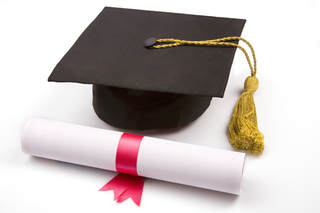The "E-E-E" Basics
|
Education
|
Environment
|
Equipment
|
1. Education: Does the instructor have a degree in piano from a university/conservatory?
|
To get the most out of piano lessons, students must have an instructor who is educated. Instructors with an advanced education (which usually includes courses in how to teach) are much more likely to help new students master essential techniques at an early age, which makes the student much more likely to succeed.
Instructors with general degrees in music, and with only class piano or basic piano training, are not qualified piano instructors. |
|
Parents seeking a teacher should make sure to ask specifics about the music degree of the potential instructor. Is the instructor's degree in piano performance or piano pedagogy? If not, then did the instructor receive college piano training? And how extensive was his/her studies in piano at the college level?
|
2. Environment: Does the instructor promote success in his/her studio?
|
The true measure of success is found in the results. How well do the instructor's students play? Avoid teachers who do not present their students in recitals and/or competitions. Successful teachers hold regular student recitals and recognize their outstanding students with awards and other achievement opportunities.
Ask to attend a recital or see video footage of a potential instructor's most recent student recital. |
3. Equipment: Does the instructor teach on an appropriate piano?
|
It is vitally important that instruction take place on an appropriate instrument. Ask the potential instructor what type of instrument the lessons will take place on. The best teachers use a newer (no more than 30 years old) or rebuilt acoustic grand piano. A grand (or baby grand) piano is needed for teaching the middle (sostenuto) and left (una corda) pedals, and the action of a grand is generally more responsive and better able to facilitate the learning of technique than an upright. A student (even a beginner!) can be taught to strike a key in various ways to achieve different tones on a grand. This is much more difficult on an upright piano, and it's just not possible on an electric (digital) piano.
Stay away from potential instructors who insist that an acoustic upright or digital piano is just as good for teaching as a grand piano. If the potential instructor is teaching lessons at an institution without an appropriate piano, then insist that an appropriate grand piano be brought in for the lessons, or seek out a different institution. If the instructor is teaching out of his/her home and is not using a grand piano for lessons, then either: A) the instructor has made a decision not to teach certain techniques (which can and should be taught to beginners), or B) the instructor does not know how to teach certain important piano techniques. |
|
What if the instructor says that he/she doesn't have room for a grand, or that a grand is too expensive? These questions have been addressed in a post by Artist Music Center (click here), which is also offering purchase scholarships for teachers and students with demonstrated financial need. Regarding space: a baby grand piano is about the same width and only about 3 feet (or sometime less) deeper than an upright piano. It can fit almost anywhere that an upright or full-size digital piano can fit. Regarding price: if you visit the right piano dealer, a new baby grand piano of decent quality can be financed at around the same monthly rate that a typical student may pay for the lessons. So, generally speaking, an instructor need only give up the fees of one student to cover the cost of obtaining the proper equipment. |
Contact1-888-978-5332 Ext. 4
[email protected] |
|



